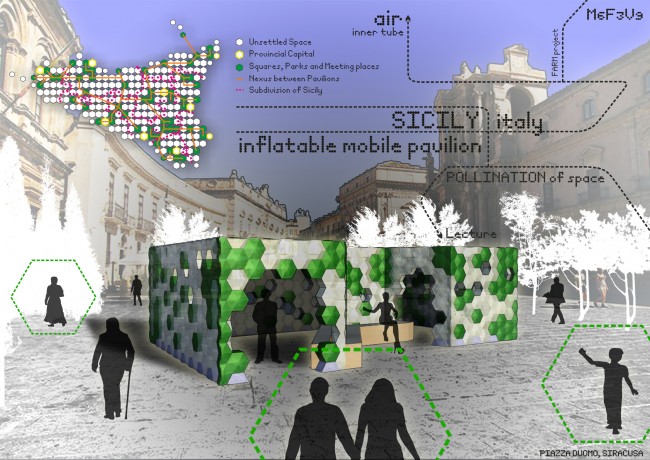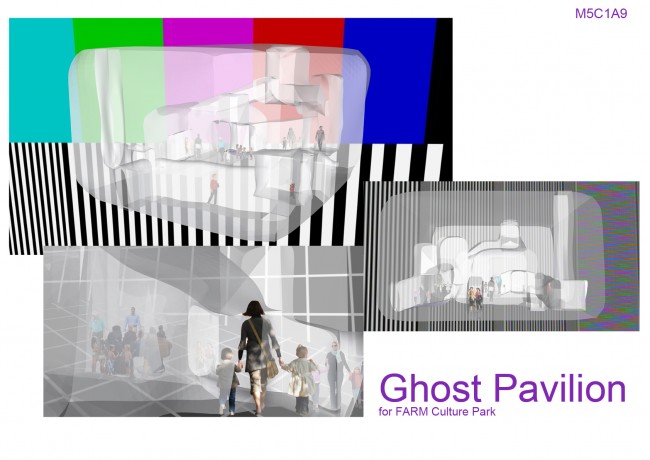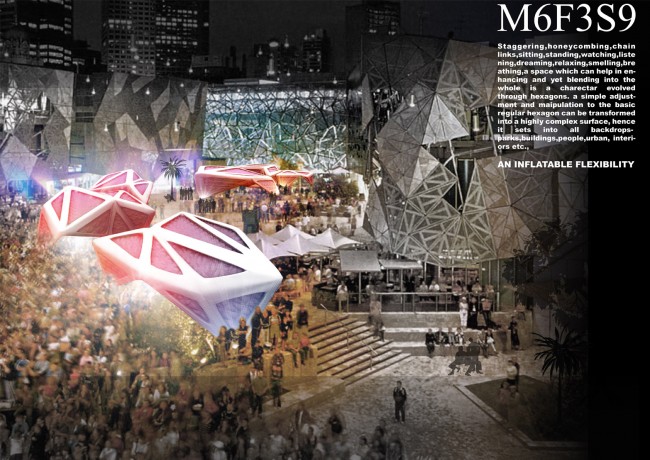Info:
Title: HEXAGON - Code: M6F3S9Contest: PFFF / 2012
By: D A S T U D I O S
Views: 3048 Likes: 0
Votes:
ITALO ROTA0 BENJAMIN BALL1 MARCO CANEVACCI4 VANESSA TODARO8 ANDREA BARTOLI63.6
HEXAGON
HEXAGON the concept
Approach was a honey-comb layout that was dealt backwards from pomegranate seed clustering. Since, (either of these are highly space-efficient designs) the later is 3D clustering whereas honeycombing is 2D. This helped in finalizing the clustering patterns- if any were ever required. Using hexagon as the primary geometry with inner tube structure to further develop the design was an intention to reduce the perimeter of the geometry, since; a hexagon has lesser perimeter of any given polygon. The ideology is a resultant of F.C.C structuring with recycled PVC inflatable material and a quest for unique typology. Why? Space, Material efficiency and a varied applicability to the design became the additional criteria.
THE MODULE form [-ulations]
It is a development towards “breaking the monotony” of inflatable typologies encountered so far. A single module is a unit which follows all the requirements of the PFFF technical specifications, with an additional ability of clustering on its planar sides to other units, creating a self-adhering mass which can accommodate larger gatherings of its kind. Regularity in the plan-form helps in cluster formation where as a break in the regularity of the 3D form creates a freedom of clustering. The wall-area of the unit can be effectively utilized when required for presentation and lecture displays. The seating layout is also devisable according to the requirements- gathering sizes- small gathering(30 people- single unit), medium sized(60 people- 3unit cluster), large gathering(100 people- 6 unit cluster)- and, typology- indoor seating, outdoor inside seating, partly informal arrangement, etc. The clustering helps in creating relief spaces in-between which form the informal seating for a single unit.
PERFORMANCE hence proved
Hexagonal modules are highly adaptable to repeatability and efficient usage of space while clustering around each other. The 3D form is material efficient since it has been devised and developed around a geometry which produces lesser perimeter. These units are designed in such a way that the repeated units can sit and set well with the adjacent unit, either forming a chain-link or a staggered formation.
Hexagons are a solution for the present and future urban chaos, since it can sit both indoors and outdoors, with a distinct character of its own- break in the banality. It can become a closed unit or semi-open. Flexibility of usage and evolution of requirement has been left absolutely into the users’ hands. So play!








